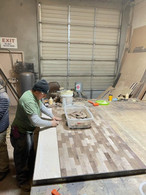Some say that the butcher block originated in China, while others say it has been around since pre-historic ages. Eventually, throughout the centuries, we have seen it evolve to the form of dining tables. Butcher block tables are in high demand, and it's no wonder why. Not only do they show off the beauty of the wood grain, but they are sturdy and, with care, can last a long time.

Different Kinds of Wood?
Butcher block tables are now made with a variety of woods. Here at LVL, we tend to gravitate towards walnut because of the beautiful grains it shows off. However, maple, hickory, and cherry are just as popular on this look. These woods tend to be the most decorative and durable.
End-Grain Butcher Block
This post's type of grain style is the end-grain butcher block, which means we use rectangular blocks arranged on their ends. It shows off the growth rings in the wood.
Face-Grain Butcher Block
This look is mostly to look nice as it would be no good as a real butcher block because the knife would be cutting into the grain and leave marks... but who really uses butcher block tables as an actual butcher block. It's more about design and style now.
Edge-Grain Butcher Block
Edge grain cuts are strong and stable. These are longer cuts of wood placed on their sides and joined at longer edges to form the table surface. This look can be achieved with joints, or it can have random lengths with finger joints.
Keep a lookout for a post with the finished look of these butcher block tables.
Whatever your needs or wants may be, LVL Custom Upholstery can create contract grade butcher block tables that will complete the look in any restaurant or public space.









Comments